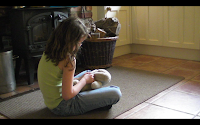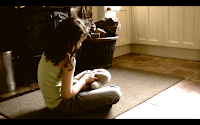Since my preliminary task I feel that I have become a lot more confident throughout the processes of research, planning, production and post production of a media product. When you compare the preliminary task and the film opening the improvement is evident.
First of all, we had a lot more time to research and plan for our film opening. We all felt that our preliminary task was rushed, so the final product wasn't as good as it could have been. We were more organised throughout the process of creating our film opening, therefore we had more time to prepare before shooting. This improved our time management and we felt more relaxed about the process.
One noticable change was the addition of different shot types. In the preliminary task we didn't use many shot types and therefore didn't have as many cuts. In contrast, our film opening featured shots of different lengths and angles, which meant we had a lot of cutting. This improved the pace of the opening and made it a lot more exciting to watch. We also felt more confident in using match-action sequences, which made the whole scene so much more interesting. We tried experimenting using unusual angles and taking risks. Also in our preliminary, almost every shot was shot using a tri-pod, making the shots static and boring. For our film opening we tried to move away from using the tri-pod and taking handheld shots. Even though many of these shots didn't make it into the final product, it was a lot better to have more shots than we needed. This was a lesson we learnt from our preliminary task as we felt limited to the footage we could use. If we found a mistake, we'd have to keep going to film again, so for our film opening we'd always film at least five takes of the same shot.
More footage meant we had the freedom to edit more in the post-production process. For example rather than just have a medium shot cut to a tracking shot. We could use a medium shot, cut to a close-up, cut to an extreme close up, back to a medium shot, then cut to the tracking shot. This meant that the pace of our film could be increased which worked really well when we added music.
The choice to add music came from our experience with our preliminary task. We decided that our preliminary task lacked atmosphere without music so, for our film opening we really wanted to use music. We used a royalty free website to find our music on and downloaded it straight onto our computers. We also edited the overall look of the footage. For the flashbacks we changed the saturation and contrast of the shots, so that the audience were able to differentiate between the past and present.
Before: After:


We were also aware of the lighting as we shot. During our preliminary task, we shot one scene infront of a window. This meant that, when I stood infront of the window, you could just see a silhouette, and the features were hard to make out. Although this would be effective for some shots, we didn't want it in this particular one. So, when we filmed our film opening we were much more aware of the lighting we used and wanted.
Lighting in the preliminary task:
Preliminary credits: Film opening titles:
Overall I feel I've really grown in confidence using my knowledge to produce media products. I definitely think that I've improved a lot since the preliminary task, which aided in the process of creating our film opening greatly.


No comments:
Post a Comment